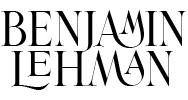Old digital cameras can compete with modern ones using Lightroom's new Denoise tool!
Just going to come straight out and say it – Lightroom’s new Denoising tool is a game-changer. Argh, I know, that’s such a cliche phrase for any new feature, but I am being honest. If you follow my blog or YouTube channel then you may know I released an “Old Camera” challenge video on April 19th. In that video I lamented about how noisy the image quality of the photos taken with this old camera were. By weird coincidence and unbeknownst to me, Lightroom’s new denoise function was released on that same day.
It wasn’t until a day later, after I edited and posted my old camera video that I finally took the time to investigate this new feature, and, uh, wow — if I had paid more attention to what this feature could do that video may have been completely different.
Let’s get right in by highlighting one extreme case of Denoising right off the bat before I get into the details of how this works. As stated above, this is a photo taken with an old, generation 1, mirrorless camera; the Lumix G7. On the left is the before, and on the right is after denoising in Lightroom.
Be honest, is your mind blown? Mine was, and if you’ve ever struggled with the myriad of programs that offer denoising then I bet yours is too. Straight off the bat, this is better than any other program I’ve ever used: Topaz, Skylum, DxO, old Lightroom/Photoshop. It’s literally miles beyond any other solution. Let’s look at another example.
Again, the results are stunning. Another reason why this is so astonishing to me is the fact that Adobe has really lagged behind the competition in all of their AI efforts. Adobe is known as the company that builds the best base-level tools with passable features. This changes that paradigm – now we have the best base-level tool with one of the best features. No more addons or extra programs needed for this extremely common problem that photographers are always tackling. Oh, and of course, perhaps the best part? It’s built into your existing pricing package. Topaz Denoise AI, the previously reigning champion, costs $159. Anyone who bought that program on the 18th of April is surely a little sore right now.
To address the title of this post, this means you can take an older camera, with a slow lens, and shoot in dark conditions with the confidence that when you get back to your office and start editing, you’ll have a real fighting chance to deliver photos that stand up to modern cameras using fast glass. This is the future of AI photography that I always predicted – taking so-so equipment and using AI and ML (machine learning) to deliver higher-end results, and that’s exactly what’s happening. The future looks amazing in this regard.
Benjamin Lehman is a professional, commercial photographer in the Cleveland, Akron, Canton, Massillon and Northeast area of Ohio.



